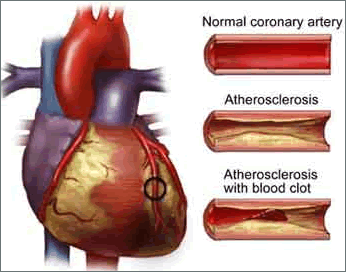Niacin
May Improve Blood Vessel Function in People with HIV
 |
 |
 |
 |
 |
 |
 |
| SUMMARY:
HIV positive people treated with extended-release niacin
for 12 weeks demonstrated improved ability of the endothelial
lining of blood vessels to expand and contract, a sign
of good function that is lost with the development of
atherosclerosis, according to a study described in the
April
24, 2010 issue of AIDS. |
|
 |
 |
 |
 |
 |
 |
 |
By
Liz Highleyman
Research
indicates that people with HIV
are more prone to cardiovascular
disease, which may be associated with antiretroviral
therapy (ART), inflammation due to ongoing viral replication,
or other factors that are not yet fully understood. Impaired endothelial
function is an early stage in the progression of atherosclerosis,
or "hardening of the arteries."

Dominic
Chow from the University of Hawaii and colleagues conducted a
study to assess the short-term effects of extended-release niacin
on endothelial function in HIV positive people with low high-density
lipoprotein (HDL) "good" cholesterol levels. HDL removes
lipids from blood vessels and therefore has a protective effect,
while low-density lipoprotein (LDL) "bad" cholesterol
deposits fats on artery walls and increases the risk of heart
disease.
This
small controlled study included 19 HIV positive participants;
most (89%) were men, the median age was 50 years, and about half
were white. All were on stable ART, 95% had HIV viral load <
50 copies/mL, and the median CD4 cell count was high at 493 cells/mm3.
Participants had HDL < 40 mg/dL and LDL < 130 mg/dL. None
were taking lipid-lowering medications.
Patients
were randomly assigned to receive or not receive extended-release
niacin; there was no placebo arm. Treatment started at 500 mg/night
and was titrated up to 1500 mg/night for 12 weeks. The researchers
measured flow-mediated vasodilation in the brachial artery of
the upper arm, or how much the arteries expand in response to
increased blood flow.
Results
 |
Participants
receiving extended-release niacin experienced a median HDL
cholesterol increase of +3.0 mg/dL, compared with a loss of
-1.0 mg/dL in the control group (P = 0.04). |
 |
The
median change in flow-mediated dilation was +0.91% in the
extended-release niacin arm versus -0.48% in the control arm,
but the difference did not reach statistical significance
(P = 0.67). |
 |
At
the end of the study period, however, flow-mediated dilation
was improved in the niacin arm compared with the control arm
after adjusting for baseline differences in flow-mediated
dilation and HDL, a difference just meeting the criteria for
significance (6.4% vs 2.7%, respectively; P = 0.048). |
 |
The
difference in improvement in flow-mediated dilation was more
significant for patients with low baseline HDL. |
This
pilot study, the investigators concluded, demonstrates that short-term
niacin therapy "could improve endothelial function in HIV-infected
patients with low HDL cholesterol."
"Our study is consistent with recent studies on individuals
without HIV infection, showing that interventions targeted at
raising HDL cholesterol may have vascular benefits," they
elaborated in their discussion. "Our finding supports the
paradigm that niacin-induced increases in HDL cholesterol contribute
to improvements in endothelial function in participants with low
HDL cholesterol."
Hawaii Center for AIDS, University of Hawaii John A. Burns
School of Medicine, University of Hawaii, Honolulu, HI; Division
of Cardiovascular Medicine, University of Wisconsin School of
Medicine and Public Health, University of Wisconsin, Madison,
WI; Public Health Sciences, University of Hawaii, Honolulu, HI.
5/25/10
Reference
DC Chow, JH Stein, TB Seto, and others. Short-term effects of
extended-release niacin on endothelial function in HIV-infected
patients on stable antiretroviral therapy. AIDS 24(7):
1019-1023 (Abstract).
April 24, 2010.
